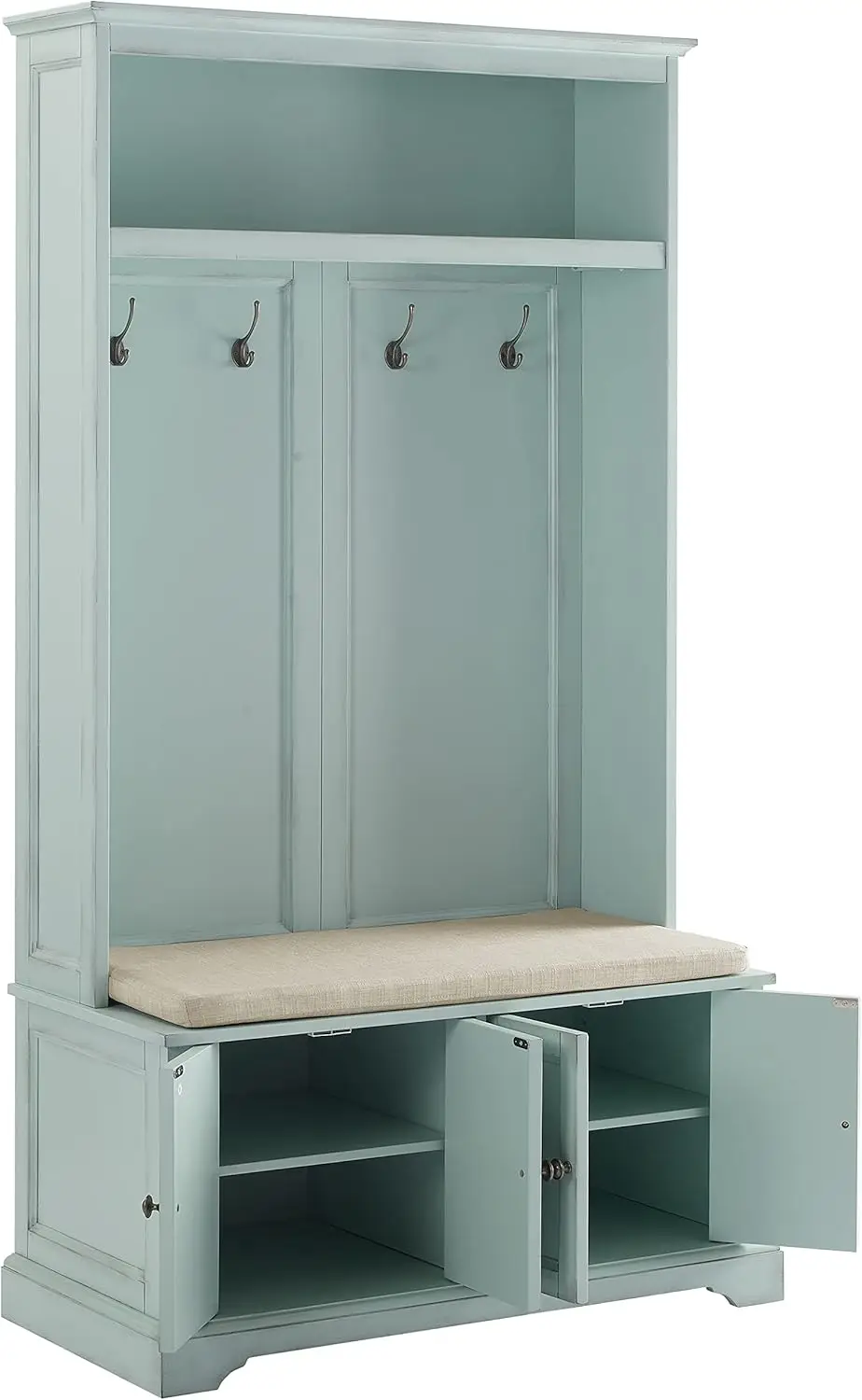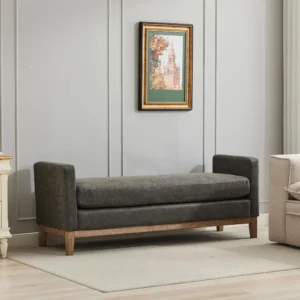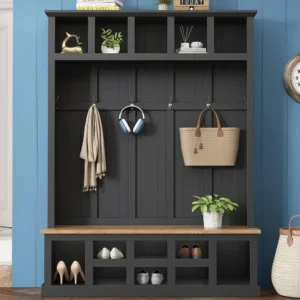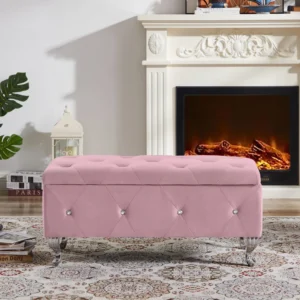Understanding the Value of Corner Bench Seating
Corner Transformation Potential
The average home has approximately 8-10 corners that remain underutilized, representing nearly 40 square feet of potential living space that could be transformed into functional areas.
Corner bench seating represents one of the smartest solutions for modern living spaces, especially as homes trend toward smaller, more efficient layouts. These cleverly designed seating arrangements take advantage of areas that typically go unused—those awkward corners that often collect dust or house a lonely plant. By transforming these overlooked spaces into functional seating areas, you’re essentially reclaiming square footage you already own.
The beauty of corner bench seating lies in its dual purpose: it solves a practical space problem while simultaneously creating a visually appealing focal point. In fact, a well-designed corner bench can increase your seating capacity by up to 30% compared to traditional chair arrangements, all while enhancing the overall aesthetic of your room.
Throughout this comprehensive guide, we’ll explore how to measure and plan your perfect corner bench, examine various design configurations, and discuss essential considerations like storage options, materials, and styling techniques. Whether you’re looking to create a cozy breakfast nook, a stylish entryway solution, or a multi-functional living space, space-saving benches offer versatility that few other furniture pieces can match.
The right corner entryway bench can revolutionize how you use your space, combining both form and function in a way that makes you wonder why you didn’t utilize that corner sooner. Let’s dive into how these space-saving marvels can transform your home.
Space-Saving Benefits That Transform Your Home
Corner bench seating does more than just fill an empty spot—it fundamentally changes how you use your living space. One of the most significant advantages is superior space efficiency. Traditional dining arrangements with chairs typically require at least 36 inches of clearance behind each seat for comfortable access. Corner benches, however, can be placed flush against walls, instantly reclaiming up to 3 feet of floor space around your dining area.
This space efficiency translates directly to increased seating capacity. A typical L-shaped corner bench can comfortably seat 5-6 people in a space that would traditionally accommodate only 3-4 chairs. That’s approximately 40% more seating in the same footprint—a game-changer for those who love to entertain but have limited square footage.
Beyond pure space optimization, corner benches deliver multiple functional benefits:
- Versatile zoning: Defines distinct areas within open-concept spaces without walls
- Enhanced traffic flow: Eliminates the obstacle of pulled-out chairs in high-traffic pathways
- Multifunctional use: Serves as dining space, homework station, reading nook, or casual workspace
- Visual expansion: Creates an illusion of spaciousness by drawing the eye along the bench’s length
- Storage solutions: Offers hidden storage that traditional seating simply cannot provide
The transformation of awkward corners also adds considerable value to your home. These previously underutilized spaces become charming conversation areas, productive work zones, or cozy relaxation spots. Many homeowners discover that their space-saving entryway ideas can be perfectly complemented by corner seating that provides both function and style.
For families especially, entryway bench storage solutions in corner configurations offer the perfect landing spot for backpacks, shoes, and everyday essentials while maximizing every square inch of available space. The combination of seating and storage creates a practical, organized entry point to your home that adapts to your family’s evolving needs.
Whether you’re working with a tiny apartment or simply want to make better use of your existing space, corner bench seating represents one of the most effective ways to optimize your home’s footprint while enhancing its functionality and appeal.
Essential Planning: Measurements and Ergonomics
Successful corner bench installation begins with thoughtful planning and precise measurements. Before rushing into design decisions, clarify your primary purpose for the bench. Will it serve mainly as dining seating, a cozy reading nook, or an entryway organization station? This fundamental question will guide your dimensions and ergonomic choices.
Step-by-Step Measurement Process
- Clear the corner area completely to access bare walls and flooring
- Measure wall lengths where the bench will be positioned, noting any obstructions
- Mark ceiling height if you’re considering a high-backed design
- Note positions of all architectural features including:
– Windows and their sill heights
– Electrical outlets and switches
– Heating/cooling vents
– Baseboards and molding
– Door swings and clearance requirements
When planning your corner bench, ergonomics must take priority to ensure comfortable daily use. The complete guide to choosing compact benches emphasizes how proper dimensions dramatically affect user comfort.
Essential Ergonomic Standards
| Dimension | Standard Measurement | Notes |
|---|---|---|
| Seat height | 18-20 inches (45-51 cm) | Match to table height; dining tables typically require 12-inch clearance above seat |
| Seat depth | 18-22 inches (45-56 cm) | Deeper for lounging, shallower for active sitting |
| Backrest height | 12-18 inches (30-45 cm) | Measured from seat surface |
| Table clearance | 24 inches (61 cm) minimum | Space between table edge and bench seat |
| Knee space | 18 inches (45 cm) | Minimum under-table clearance |
| Aisle width | 36 inches (91 cm) | Minimum for comfortable passage |
For dining applications, coordinate your bench height with your table dimensions. Most standard dining tables are 30 inches high, requiring a seat height of approximately 18 inches for comfortable dining. For kitchen breakfast nooks, consider a slightly more casual posture with a bench height of 19-20 inches.
When measuring for backrest angles, aim for 95-100 degrees from the seat for dining benches and 105-110 degrees for more relaxed seating. This subtle recline makes extended sitting much more comfortable without compromising the bench’s space-saving advantages.
Remember that these standard measurements may need adjustment based on your family’s specific requirements. Households with very tall or short members, elderly users, or children may benefit from customized dimensions that accommodate everyone’s comfort.
Design Configurations for Every Space
The beauty of corner bench seating lies in its adaptability to various spaces and needs. Different configurations offer unique advantages depending on your room layout, desired seating capacity, and aesthetic preferences.
L-Shaped Configurations
The classic L-shaped design represents the most versatile and common corner bench arrangement. This configuration works beautifully in rectangular rooms where two walls meet at a 90-degree angle. L-shaped benches maximize seating while maintaining an open feel and easy access.
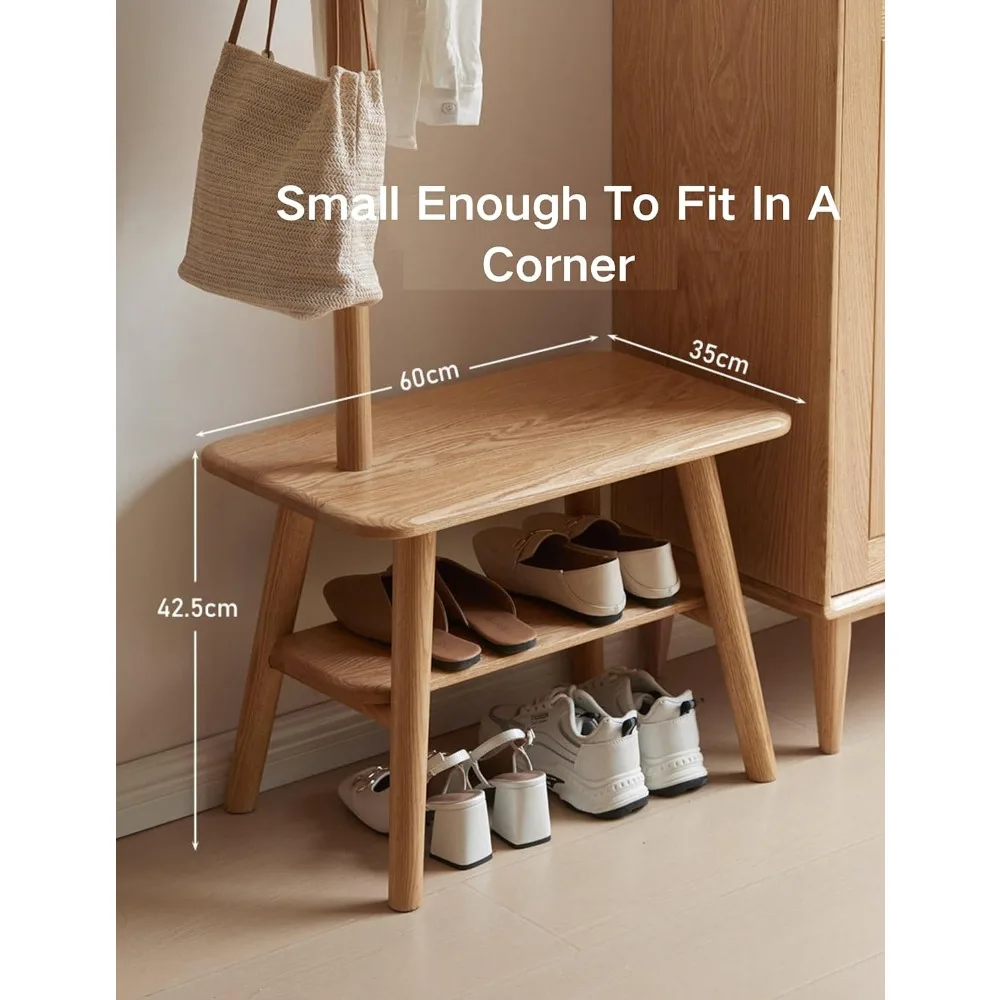
U-Shaped Configurations
For those seeking maximum seating capacity, U-shaped designs create an intimate, booth-like experience. This configuration wraps around three sides of a table, creating a cozy enclosure perfect for family gatherings or game nights. U-shaped benches work particularly well in dedicated dining nooks or larger kitchens where the arrangement can be centered in the space.
Floating Bench Designs
For modern, minimalist spaces, floating benches create a contemporary look while visually expanding the room. These designs appear to “float” above the floor, either by wall-mounting or through sleek, recessed base construction. This style works exceptionally well in smaller spaces where visual lightness helps maintain an airy atmosphere.
Built-In vs. Freestanding Options
| Feature | Built-In | Freestanding |
|---|---|---|
| Customization | Highly customizable to exact dimensions | Limited to available sizes |
| Installation | Permanent, requires construction | Movable, no construction needed |
| Cost | Higher initial investment | Generally more affordable |
| Storage potential | Maximizes every inch of space | Limited to piece dimensions |
| Resale impact | Adds home value | Can move with you |
| Design flexibility | Future changes require reconstruction | Can be replaced or reconfigured |
The corner hall tree concept represents an excellent example of how corner configurations can solve multiple functional needs simultaneously, providing seating, storage, and organization in one cohesive unit. These multifunctional pieces are particularly valuable in entryways and mudrooms where space optimization is essential.
When selecting the right configuration for your space, consider both current and future needs. A family with young children might prefer the easy-clean surfaces of built-in benches with storage for toys, while empty-nesters might favor the intimacy of a U-shaped arrangement for entertaining guests.
Remember that each configuration impacts traffic flow differently. Ensure there remains at least 36 inches of clearance for comfortable passage around the seating area, particularly for dining applications where people will be regularly moving in and out of the space.
Smart Storage Solutions for Double Functionality
The true genius of corner bench seating emerges when storage capabilities are thoughtfully integrated into the design. These dual-purpose solutions transform simple seating into organizational powerhouses that can dramatically increase your home’s functional storage.
Lift-Up Seat Storage
Lift-top bench seating provides the largest possible storage volume, making it ideal for bulky items like extra blankets, seasonal cushions, or rarely used kitchen appliances. This design utilizes the entire footprint of the bench as potential storage space.
Advantages:
* Maximum storage capacity
* Simple construction compared to drawer systems
* Cost-effective solution
* Conceals items completely from view
Considerations:
* Requires removing cushions to access items
* Not ideal for frequently accessed items
* Needs quality hinges and lifting mechanisms
* May require assistance to open if heavily built
Drawer Storage Solutions
Built-in drawers offer more accessible storage with the convenience of pull-out access. This option works well for items you need to reach regularly without disturbing seated guests.
Advantages:
* Easy access without disrupting seating
* Better organization of smaller items
* Can incorporate dividers for maximum organization
* Accessible for all users, including children and elderly
Considerations:
* Reduces total storage volume compared to lift-tops
* Requires more complex construction
* Needs quality drawer slides for long-term functionality
* Typically more expensive to build
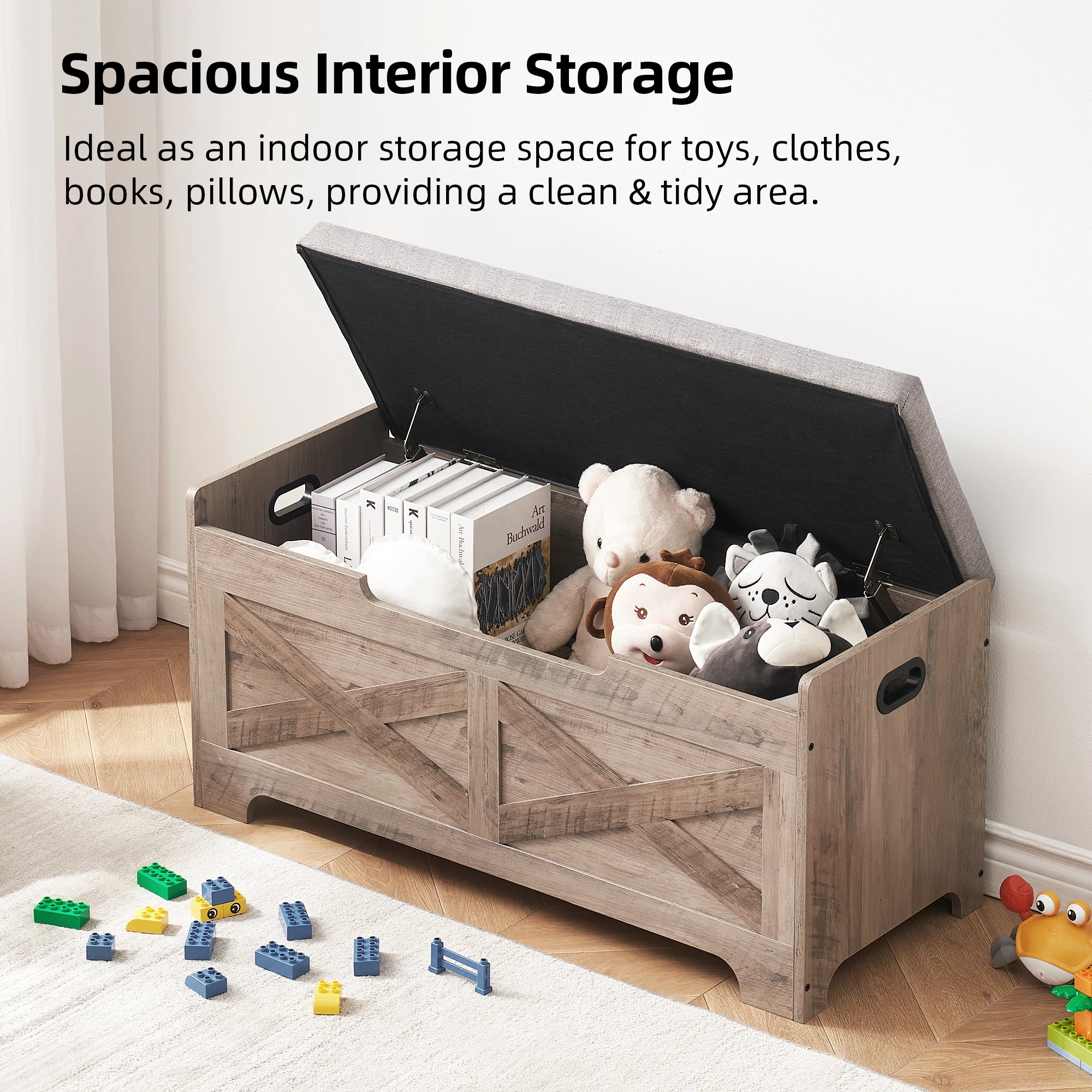
Many homeowners find that creative corner bench storage ideas combine multiple approaches for maximum functionality. For example, incorporating lift-top storage in the corner section while using drawers in the straight runs provides both volume and accessibility where each makes the most sense.
For entryway and mudroom applications, mudroom bench cubbies offer specialized organization for shoes, bags, and outerwear, keeping these high-traffic areas tidy while providing convenient seating for putting on and removing footwear.
When planning storage integration, consider these volume guidelines:
* Lift-top benches yield approximately 3-4 cubic feet of storage per linear foot
* Drawer systems provide about 1.5-2 cubic feet of organized storage per linear foot
* Open cubbies offer roughly 2 cubic feet per linear foot but with visibility and easy access
The most successful storage solutions match your specific needs to the appropriate mechanism, ensuring that your corner bench becomes a hardworking, multifunctional asset in your home.
Entryway Bench with Cushion, Mudroom Bench with Cushion, Shoe Bench for Entryway
$1,186.63 Select options This product has multiple variants. The options may be chosen on the product pageCoat Rack Shoe Bench, Corner Entryway Bench, Corner Hall Tree, Shoe Bench for Entryway
$313.58 Select options This product has multiple variants. The options may be chosen on the product pageCorner Entryway Bench, Entryway Bench with Cushion, Modern Entryway Bench, Shoe Bench for Entryway
$476.34 Select options This product has multiple variants. The options may be chosen on the product pageBench with Hooks and Storage, Entryway Hall Tree, Mudroom Bench with Cubbies, Mudroom Bench with Shoe Storage
$818.38 Select options This product has multiple variants. The options may be chosen on the product pageModern Entryway Bench, Wood Entryway Bench, Wood Mudroom Bench
$497.69 Select options This product has multiple variants. The options may be chosen on the product pageEntryway Bench with Cushion, Small Entryway Bench
$466.79 Select options This product has multiple variants. The options may be chosen on the product page
Selecting Materials for Durability and Style
The materials you choose for your corner bench will significantly impact both its longevity and aesthetic appeal. Different environments and usage patterns demand specific material considerations to ensure your bench remains beautiful and functional for years to come.
Framework Materials
Plywood
* Best for: DIY projects and custom builds
* Strengths: Dimensional stability, resistance to warping, good strength-to-weight ratio
* Considerations: Edge finishing required, quality varies significantly
* Cost range: $30-75 per sheet depending on grade
MDF (Medium Density Fiberboard)
* Best for: Painted finishes and precise, smooth edges
* Strengths: Uniform composition, smooth surface, excellent for routing details
* Considerations: Heavier than plywood, susceptible to moisture damage
* Cost range: $25-50 per sheet
Solid Wood
* Best for: High-end, long-lasting projects with natural beauty
* Strengths: Unmatched durability, repairable, timeless appeal
* Considerations: Higher cost, may expand/contract with humidity changes
* Cost range: $5-15 per board foot depending on species
Wood entryway benches demonstrate how the natural warmth and character of wooden materials can create an inviting first impression in your home. The choice of wood species significantly impacts both appearance and performance—oak provides exceptional durability, while pine offers affordability with a casual charm.
Upholstery Considerations
For comfort and style, upholstery choices matter tremendously:
- Performance fabrics like Sunbrella, Crypton, or Revolution offer stain resistance and durability for family-friendly spaces
- Leather and faux leather provide easy cleaning and sophisticated appearance but require conditioning to prevent cracking
- Natural fibers like cotton and linen create a casual, welcoming look but may require more frequent cleaning
- Outdoor-rated fabrics are essential for covered porches or high-humidity environments
For cushion construction, consider foam density based on usage:
* Light occasional use: 1.5-1.8 pound density
* Regular daily use: 2.0-2.5 pound density
* Heavy commercial use: 2.5-3.0 pound density
Higher density foams cost more initially but maintain their shape and comfort substantially longer, making them a better long-term investment for frequently used benches.
When selecting finishing materials and hardware, remember that these details significantly impact both aesthetics and functionality. Soft-close hinges prevent slamming, while undermount drawer slides create a cleaner look than standard side-mount options. Similarly, moisture-resistant finishes are essential for kitchen applications, while child-safe hardware prevents pinched fingers in family spaces.
DIY vs. Professional: Making the Right Choice
Deciding whether to tackle your corner bench project yourself or hire a professional involves honestly assessing your skills, tools, budget, and timeline. Both approaches have distinct advantages depending on your specific circumstances.
DIY Approach Assessment
Before committing to a DIY corner bench project, evaluate:
Skill Requirements:
* Basic woodworking knowledge for simple designs
* Advanced carpentry skills for complex built-ins
* Upholstery experience for cushioned options
* Precise measuring ability for corner angles
Essential Tools:
* Circular saw or table saw
* Drill and impact driver
* Kreg jig or other joining system
* Miter saw for precise angles
* Sander and finishing supplies
Time Investment:
* Simple freestanding L-bench: 1-2 weekends
* Built-in storage bench: 3-4 weekends
* Custom upholstered project: Additional 1-2 days
DIY projects shine when you’re working with straightforward designs, standard dimensions, and have some woodworking experience. The average DIYer can save approximately 40-60% on labor costs, making this approach particularly attractive for budget-conscious homeowners.
When Professional Help Makes Sense
Consider hiring professionals when:
* Your design involves complex angles or curves
* You’re integrating electrical components or lighting
* The bench requires structural modifications to your home
* Premium finishes like custom veneers or specialized coatings are desired
* You need guaranteed results for resale or tight timelines
Professional installation typically costs between $75-150 per hour depending on location and expertise level, with most corner bench projects requiring 8-30 hours of labor depending on complexity. This investment often results in higher-quality finishes, precise fits, and warranted work.
For middle-ground approaches, consider semi-custom options where you purchase ready-made components but handle installation yourself, or collaborate with professionals for the complex portions while managing simpler aspects independently.
The most successful projects often begin with realistic expectations about your abilities, available time, and budget constraints. Being honest about these factors from the beginning helps prevent costly mistakes and ensures satisfaction with your completed corner bench.
Project Planning Framework
Successful corner bench projects follow a systematic approach that addresses both practical and aesthetic considerations. This framework guides you through each phase, ensuring nothing important gets overlooked.
Phase 1: Concept Development
Begin by collecting inspiration and defining your vision:
* Create a digital or physical mood board
* Identify must-have features versus nice-to-have elements
* Establish clear functional priorities
* Define your aesthetic direction (modern, rustic, traditional, etc.)
Phase 2: Detailed Planning
With your concept established, move to specific planning:
* Take comprehensive measurements as outlined in Section III
* Create scaled drawings (paper or digital)
* Develop a detailed materials list
* Establish a realistic budget with 15-20% contingency
* Create or obtain construction plans
Phase 3: Resource Acquisition
Before beginning construction:
* Purchase all materials with extra for mistakes
* Rent or purchase necessary specialized tools
* Prepare your workspace with adequate lighting and ventilation
* Arrange for debris disposal
* Schedule any needed professional assistance
Phase 4: Construction Timeline
Develop a realistic timeline that accounts for:
* Framework construction (typically 1-3 days)
* Drying time for adhesives and finishes (often overlooked)
* Hardware installation (½-1 day)
* Upholstery work if applicable (1-2 days)
* Final adjustments and touchups (½ day)
Throughout your project, documentation proves invaluable. Take “before” photos, maintain progress images, and keep records of materials and techniques used. This information not only provides satisfaction as you see the transformation but becomes essential should you need to make repairs or modifications in the future.
Styling Your Corner Nook
The finishing touches transform a functional corner bench into a captivating focal point that enhances your entire space. Thoughtful styling makes the difference between a merely practical installation and a design feature that adds genuine character to your home.
Cushion and Pillow Selection
When selecting cushions, balance comfort with practicality:
* For dining benches, aim for 2-3 inches of foam thickness
* For reading nooks, increase to 4-5 inches for extended comfort
* Select fabrics appropriate to your lifestyle—stain-resistant for family spaces, luxurious textiles for adult areas

Layer decorative pillows strategically:
* Use odd numbers (3 or 5) for visual interest
* Vary sizes and shapes while maintaining a cohesive color story
* Include at least one patterned option to add dimension
* Consider seasonal rotation for refreshed looks throughout the year
Entryway bench cushions with the right thickness and fabric not only enhance comfort but also introduce color and texture that complement your overall design scheme. For family spaces, washable cushion covers offer practicality without sacrificing style.
Complementary Lighting
Proper lighting elevates your corner bench from basic seating to inviting destination:
* Pendant lights hung 30-36 inches above the table create intimate dining zones
* Wall sconces at eye level provide gentle illumination for reading corners
* Under-bench LED strips add drama and practical nighttime visibility
* Table lamps bring warmth and adjustability to multipurpose nooks
Accessorizing Techniques
Complete your corner nook with thoughtfully selected accessories:
* Wall art positioned at eye level when seated creates visual interest
* Small area rugs define the space and add warmth underfoot
* Table centerpieces should be proportional to the space—avoid oversized arrangements that impede conversation
* Consider functional accessories like magazine baskets, charging stations, or coffee table books that support how you’ll use the space
Remember that negative space remains important—avoid overcrowding your newly created corner nook with too many decorative elements. The most inviting spaces maintain a balance between personality and functionality, allowing the bench itself to shine while creating a comfortable, usable area for daily life.
Maintenance Best Practices
Preserving the beauty and functionality of your corner bench requires consistent care tailored to its specific materials and usage patterns. A proactive maintenance approach prevents premature wear and extends the life of your investment.
Wood Care Essentials
For wooden bench components:
* Dust weekly with a soft, slightly damp cloth
* Apply appropriate wood conditioner quarterly to prevent drying and cracking
* Immediately address any liquid spills to prevent staining and water damage
* Use coasters and placemats to protect surfaces from heat and moisture
* Re-seal exposed wood surfaces annually or when water no longer beads on the surface
Upholstery Protection
Fabric and upholstered elements require special attention:
* Vacuum cushions and backs regularly using upholstery attachments
* Apply fabric protector spray to non-treated fabrics every 6-12 months
* Rotate cushions monthly to ensure even wear
* Address spills immediately using appropriate cleaning methods for your specific fabric
* Avoid direct sunlight exposure which can cause fading and fabric degradation
Hardware Maintenance
Don’t overlook the mechanical components:
* Tighten any loose screws or fasteners quarterly
* Lubricate hinges and drawer slides with appropriate products annually
* Check lifting mechanisms for proper function and adjust as needed
* Replace damaged or worn hardware promptly to prevent further issues
For high-traffic areas like entryways, daily quick-cleaning and weekly deep-cleaning prevent dirt buildup and maintain appearance. Kitchen and dining benches benefit from post-meal wipe-downs to prevent food residue accumulation that can attract pests or cause odors.
Seasonal maintenance checks should include examining for signs of structural issues, testing all storage mechanisms, and assessing cushion condition. This systematic approach helps identify small problems before they require major repairs or replacement.
Avoiding Common Design Mistakes
Even the most beautiful corner bench design can fall short if common pitfalls aren’t avoided during planning and execution. Being aware of these potential issues helps you create a truly functional and enjoyable space.
Measurement and Proportion Errors
The most frequent mistakes involve basic dimensions:
* Insufficient table clearance, making it difficult to slide in and out
* Benches too deep for comfortable seating (over 22 inches)
* Inadequate aisle space for comfortable passage (less than 36 inches)
* Backrest heights that interfere with window sills or wall décor
Prevent these issues by creating full-scale mockups using cardboard or tape outlines on the floor before building. Sitting in similar bench styles before construction also helps identify comfort issues early.
Traffic Flow Problems
Corner benches can create traffic bottlenecks when improperly placed. Common issues include:
* Positioning that blocks natural pathways between rooms
* Insufficient space for chair movement on non-bench sides of tables
* Layouts that force guests to disturb others when leaving the table
The best small benches for entryways maintain proper clearances while maximizing seating and storage. Always prioritize functionality over maximizing seat count when space is limited.
Material Mismatch Issues
Selecting inappropriate materials leads to premature wear and maintenance challenges:
* Using non-moisture resistant materials in kitchen applications
* Selecting light fabrics for high-traffic areas with children or pets
* Choosing porous surfaces for eating areas without proper sealing
Address these concerns by matching material properties to your specific usage patterns and environment. Consider foot traffic, exposure to elements, and typical activities when selecting finishes and fabrics.
Seating Comfort Compromises
Functionality sometimes overshadows comfort in corner bench design:
* Insufficient cushioning for extended sitting
* Missing back support where needed for longer gatherings
* Awkward corner transitions that create uncomfortable seating positions
Test your design with temporary cushions and mock seating arrangements before finalizing construction. Remember that aesthetics should never completely override comfort for everyday usability.
Corner Bench Applications Beyond the Kitchen
While kitchen nooks may be the most common application for corner bench seating, these versatile pieces excel in numerous areas throughout the home. Their space-maximizing design adapts beautifully to various rooms and functions.
Living Room Reading Retreats
Transform underutilized living room corners into cozy reading havens:
* Position near windows for natural reading light
* Incorporate shelving above or below for book storage
* Add adjustable lighting for evening reading comfort
* Include power outlets for electronic devices
* Use deeper cushioning (4-5 inches) for extended comfort
Home Office Solutions
Corner benches create efficient workspace alternatives:
* Combine with floating desks for space-efficient work areas
* Provide guest seating that tucks away when not needed
* Create collaborative meeting spaces in larger home offices
* Incorporate file storage within bench bases
* Enable quick conversion between work and relaxation uses
Entryway Organization Stations
The entryway represents one of the most practical applications for corner seating:
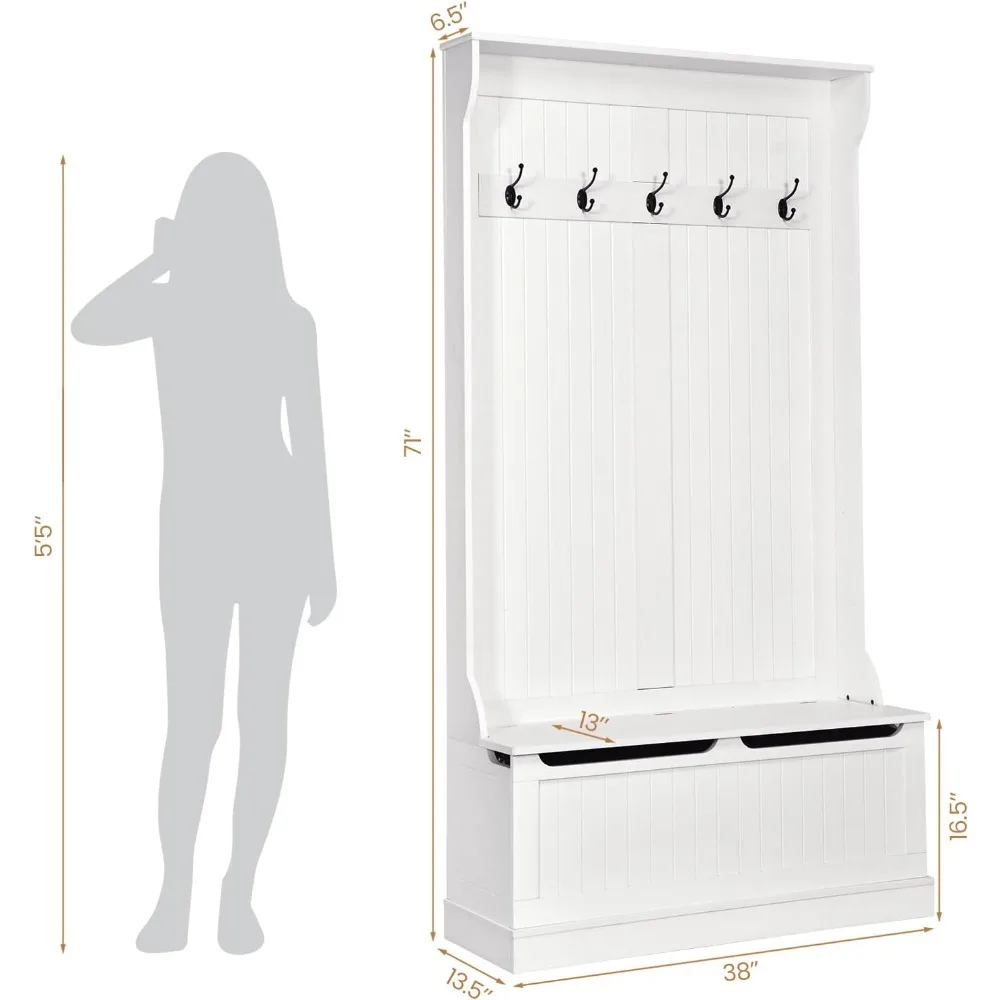
- Create a dedicated space for removing and storing shoes
- Provide convenient seating for putting on footwear
- Incorporate hooks above for coats and bags
- Add hidden storage for seasonal items
- Establish a landing zone for mail, keys, and everyday essentials
Many homeowners discover that maximizing space in utility rooms with corner bench solutions adds functionality to previously overlooked areas. Even small mud rooms or laundry spaces benefit from compact corner seating with integrated storage for supplies.
Outdoor Living Extensions
Weather-resistant corner benches bring the same benefits outdoors:
* Deck corner benches maximize seating around outdoor dining tables
* Protected porch areas benefit from built-in corner seating with storage for outdoor supplies
* Garden nooks become inviting destinations with strategically placed corner benches
* Poolside areas gain functional seating and towel storage with water-resistant designs
When adapting corner bench concepts to different rooms, consider the unique requirements of each space. Bedroom window seats need comfortable cushioning and perhaps integrated lighting for reading, while bathroom corner benches might incorporate hamper storage and moisture-resistant materials for practical functionality.
Smart Corner Bench Additions
Elevate your corner bench from basic seating to a truly modern living solution by incorporating thoughtful technological and convenience enhancements. These additions transform a simple bench into a command center for daily life.
Integrated Power Solutions
Modern living demands convenient access to electricity:
* Built-in USB charging ports for devices (approximately $20-40 per outlet)
* Pop-up power stations concealed in the tabletop ($50-150)
* Wireless charging pads embedded beneath surfaces ($30-80)
* Cable management systems that keep cords organized and hidden ($15-50)
These power additions make your corner bench suitable for remote work, homework sessions, or simply keeping devices charged without cluttering the space with visible cords.
Lighting Enhancements
Strategic lighting transforms functionality and ambiance:
* Motion-activated under-bench lighting for nighttime visibility
* Dimmable overhead pendant fixtures on separate switches
* Adjustable reading lights integrated into the backrest
* Ambient lighting strips that create evening atmosphere
Installation complexity varies from simple plug-in solutions to hardwired options requiring professional electricians, with costs ranging from $30 for basic LED strips to $300+ for custom integrated systems.
Convertible Features
For maximum versatility, consider mechanical enhancements:
* Height-adjustable tables that transition between dining and coffee table heights
* Pull-out surfaces for occasional workspace expansion
* Extendable bench sections for additional guests
* Fold-down backrests that convert between bench and daybed configurations
These adaptable elements increase functionality without requiring additional floor space, making them particularly valuable in smaller homes and apartments where rooms serve multiple purposes throughout the day.
Questions to Consider Before Starting Your Project
Before beginning your corner bench project, consider these key questions to ensure your design meets your specific needs and expectations:
“Is corner bench seating suitable for formal dining rooms?”
Yes, when properly designed and styled. Choose elegant materials, refined upholstery, and sophisticated accessories. Built-in designs with custom details can create formal atmosphere while maintaining the space-saving benefits.
“Can corner benches work in very small spaces?”
Absolutely. In fact, they’re often more space-efficient than traditional chairs in tight areas. Focus on streamlined designs, consider backless options where appropriate, and integrate storage to maximize functionality without overwhelming the space.
“What defines an ergonomic corner bench?”
Ergonomic corner benches feature proper seat height (18-20 inches), appropriate depth (18-22 inches), supportive backrests at correct angles (95-110 degrees), and adequate cushioning for extended sitting comfort. The relationship between bench height and table height remains particularly crucial for dining applications.
“What’s the difference between banquette and bench seating?”
While often used interchangeably, banquettes typically refer to upholstered, restaurant-style built-in seating with padded backs and seats. Bench seating represents a broader category that includes simpler designs that may lack upholstery or backrests. All banquettes are benches, but not all benches are banquettes.
“Which corner bench designs work best for families with children?”
Family-friendly designs feature stain-resistant fabrics or wipeable surfaces, rounded corners for safety, storage for toys and supplies, and durable construction that withstands active use. Performance fabrics like Crypton or Sunbrella offer spill protection without sacrificing style.
“How do built-in versus freestanding benches compare for resale value?”
Built-in benches typically add more resale value as permanent home improvements, especially when well-executed with quality materials. However, freestanding options offer flexibility for changing needs and can move with you. Your local market and the quality of installation significantly impact potential return on investment.
By thoughtfully addressing these questions before beginning your project, you’ll create a corner bench solution that truly enhances your space and lifestyle. Remember that the most successful designs balance aesthetic preferences with practical functionality for your specific situation.

